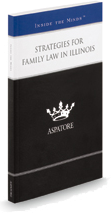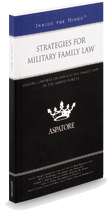Today, divorces that are resolved through contentious litigation are less common. Instead, couples are opting for forms of alternative dispute resolution (ADR), which allow them to create their separation agreement outside of court. Collaborative divorce is one type of ADR, and it can even be helpful for resolving contested or contentious divorces. A successful collaborative divorce has each spouse represented by a skilled and experienced Tulsa divorce attorney.
When couples are able to reach a successful resolution in ADR, they can save themselves time, money, and stress and begin their new lives with a stronger foundation. ADR focuses on collaboration and compromise rather than pitting spouses against each other in a courtroom. Collaborative divorce is particularly useful when couples wish to protect their individual interests during proceedings.
The Process of a Collaborative Divorce
The goal of the collaborative process is to avoid litigation and help spouses obtaining a contested or uncontested divorce reach a compromise in their separation agreement. This includes agreeing on property division, spousal support, child custody, and child support, if applicable. The process of a collaborative divorce may vary based on a family’s unique circumstances or the attorneys they work with, but it will typically follow these steps:
- Attorneys: In collaborative divorce, each spouse is represented by their own attorney. The first step in a collaborative divorce is for each spouse to find an attorney whom they feel comfortable with and who has significant experience with the collaborative divorce process.
- Personal Goals: Each spouse can take time to discuss their wishes and hopes for a separation agreement with their attorney at any point before or during negotiations. Spouses can also explain where compromise is possible and where they are unwilling to compromise, as well as their priorities.
- Agreement: Both spouses and their attorneys meet and make a written agreement to engage in the process of a collaborative divorce. The agreement also states that if collaboration does not work, the couples will take the case to trial with new attorneys.
- Negotiations: Meetings can be held whenever works for both parties over a period of weeks or months to negotiate the terms of the agreement. These negotiations often begin with a focus on the general aspects, such as whether spousal support will be awarded or which parents will have legal and physical custody.
Then, couples can begin determining specific aspects, such as the amount of spousal support or the specifics of a parenting plan. Property division is an essential aspect of all divorces, while spousal support is only necessary in some cases. Child support and custody are essential if a divorcing couple has children.
The more aspects that need to be negotiated, the more time is likely needed to resolve the agreement. In a collaborative divorce, attorneys will protect the interests of the spouse they are representing while also working on an agreement beneficial for any children and the family as a whole. - Court Submission: Once a final agreement is reached that both parties are satisfied with, the separation agreement is submitted to the court. The court reviews the agreement and ensures it is not incredibly unfair to either party. If the agreement involves decisions about children, the court ensures that decisions are in the child’s best interests. If the agreement is approved, it is entered into the court as a court order and is enforceable.
Benefits of Collaborative Divorce
There are several benefits to resolving your divorce collaboratively, including:
- You have more control over the outcome of the divorce.
- The process takes less time, is less stressful, and is less expensive.
- You are not required to work around the court’s availability and schedule.
- The process is easier on the entire family, especially children.
- It creates a strong foundation for a co-parenting relationship.
- The divorce is more private.
Collaborative divorce is not for everyone, but it may help you minimize the cost and emotional strain of the divorce process.
FAQs
Q: What Is the Downside of Collaborative Divorce?
A: One of the downsides of a collaborative divorce is that if you and your spouse have to litigate your divorce in the end anyway, it is a waste of time and money. If you and your spouse are unable to compromise or discuss solutions, collaborative divorce may not be helpful for you. Although a collaborative divorce is much less expensive than a litigated divorce, it is still costly. It’s important to determine if collaborative divorce is likely to succeed before committing to the option.
Q: Can You Get a Divorce Without the Other Person Signing in Oklahoma?
A: Yes, you can get a divorce without the other person signing in Oklahoma. This is called a default divorce. It occurs when a spouse does not respond after being served with divorce papers and does not show up to the divorce hearing or the default divorce hearing.
If a spouse avoids being served papers, this may also qualify for a default divorce hearing. If the spouse does not show up for either hearing, then the court is likely to grant a default divorce, meaning they grant the petitioner what they requested in their initial divorce filing.
Q: Does It Matter Who Files for Divorce First in Oklahoma?
A: It can matter who files first in a divorce case in Oklahoma because the state does allow fault-based grounds for divorce. The petitioner can choose whether to file on one of these fault-based grounds or on no-fault grounds, and they can choose where to file.
The petitioner must also pay the filing fee and typically presents their case first to the court. Depending on the wishes of each party, this may be an advantage or a disadvantage. You can talk with a divorce attorney to determine whether filing first would benefit your case.
Q: What Are the Steps for the Collaborative Divorce Process?
A: The steps in the collaborative divorce process can vary based on the needs of both parties involved, but they typically are as follows:
- Spouses both find an attorney to represent them and discuss their wishes for the collaborative process.
- Spouses and their attorneys meet to agree to the process of collaborative divorce.
- Negotiations occur to determine the contents of the separation agreement.
- The final agreement is filed with the court, which will approve it unless it is unfair.
Contact Stange Law Firm in Tulsa
If you would like to end your marriage but are unsure of the right method, contact the attorneys at Stange Law Firm. We have experience in many forms of ADR and litigated divorces and can help you decide what is needed to protect your rights and peace of mind.



